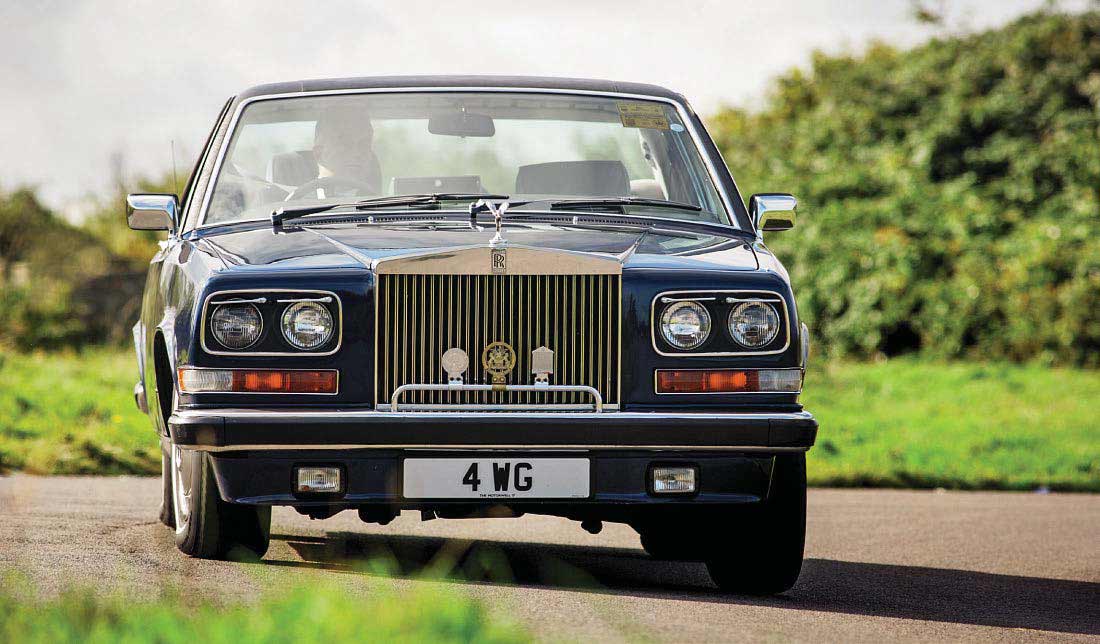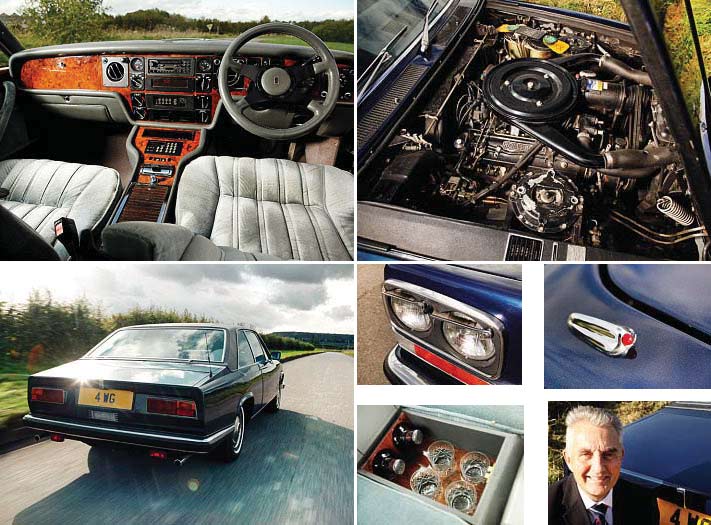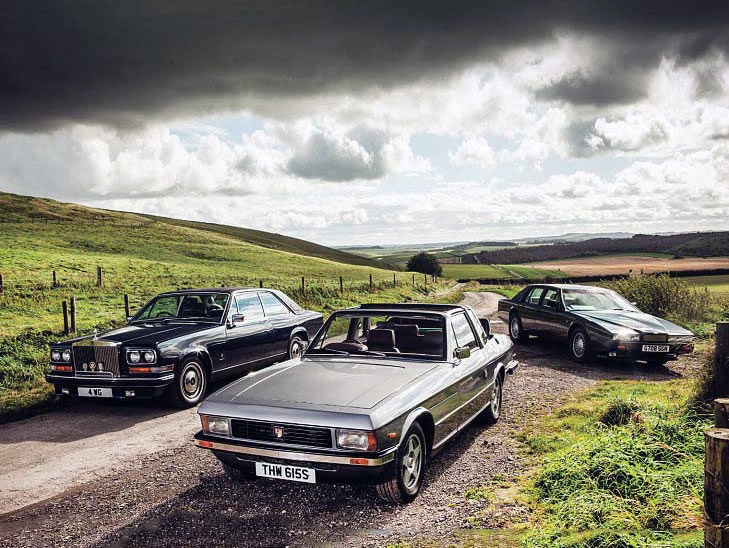
And now for something completely different. Luxobarge showdown. Lagonda vs. Rolls-Royce versus Bristol in a titanic battle of eccentric excess. In defence of the barged that challenged our sense of style. Even conservative marques can go a little crazy, says Simon Charlesworth as he reassesses leftfield efforts from Bristol, Rolls-Royce and Aston Martin. Photography Tony Baker.
Values of established favourites and even forgotten heroes continue to climb, but what about the others? Classics that have been deliberately ignored for mostly superficial reasons, yet they pay heed to the codifier of car design, Harley Earl, when he implored: “Do all you can. Don’t hold anything back. If you do, it will be obsolete tomorrow.”
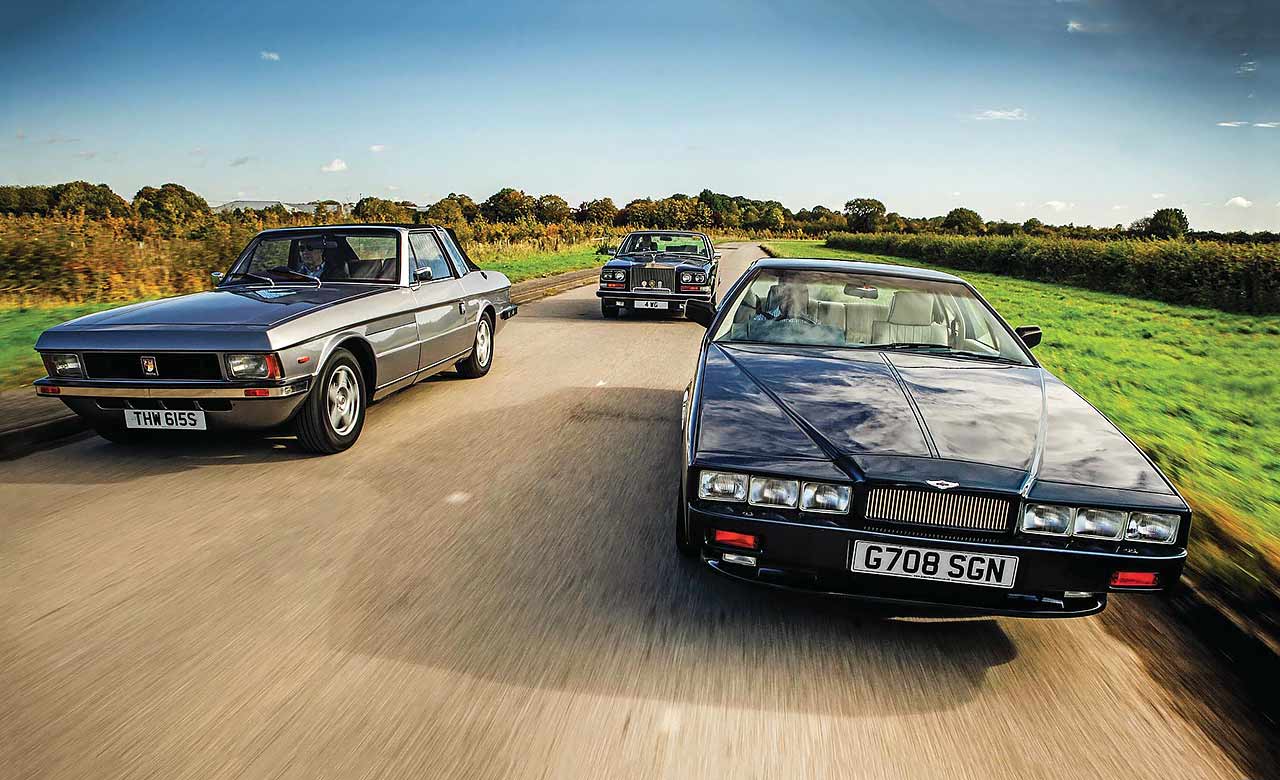
Whatever your thoughts toward our individualistic trio of Aston Martin Lagonda, Bristol 412 and Rolls-Royce Camargue, they do share similarities. They were all launched in the mid-’70s and were powered by V8 engines via automatic drivetrains (minus officially quoted outputs). They feature self-levelling suspension and each represents something a bit off-stream for their respective prestige marques.
Two of these range-topping machines, meanwhile, are frequently vilified for their stereotypical owner. An individual whose ability to specify a new Lagonda or Camargue made it look as if they had just cartwheeled the unfortunate thing through a tourist gift shop.
Mockery, though, is not why our group has been assembled. It is because tastes evolve and it’s time to admit my admiration for them. Yes, there is a risk of being classified as a louche vulgarian or even a motoring philistine but, as a ’70s product myself, I implore you to look at these cars with eyes afresh and mind open. Now that we’ve all been exposed to the modern excesses of bling and its horrendous visual legacy, these classics deserve reappraisal.
The Camargue was spawned in 1969 thanks to the desire of the company’s boss, David Plastow, to create a two-door coupe that would sit at the top of the range and stand apart from the Silver Shadow. It remains one of the most contentious cars to have rolled out of Rolls-Royce.
Drawing inspiration from Lord Hanson’s 1968 Pininfarina Bentley T1 Coupe Speciale, the Turin carrozzeria was briefed and its DY20 proposal chosen. It was based on a Shadow floorpan that was shortened by 20in, and production was pencilled-in for 1973. The 1971 bankruptcy of Rolls-Royce Ltd brought everything to a halt, but as the Motor Car Division was restructured into a separate entity – Rolls-Royce Motors Ltd – and following DY20’s re-evaluation, the Receiver agreed to the project continuing and being launched in 1975.
Assembled in Crewe, with body production by HJ Mulliner Park Ward in London (until it was transferred to Park Sheet Metal in 1978), the Camargue featured a bi-level automatic air-con system that was said to costas much as a contemporary Mini. Little wonder it would become the world’s most expensive production car.
The Camargue enjoyed a life of decadent options from the Special Features Department and minor mechanical revisions – including rack-and-pinion steering in 1977 and revised rear suspension in 1978 (later used on the Silver Spirit) – that amounted to 529 built plus a unique 1985 Bentley version. However, it was the manner in which the Camargue left the stage in 1986 – following a run of a dozen white US Camargue Limited variants that groaned with kit – that has contributed towards the model’s sentence in the pantheon of crass.
Ambling around Mark Griffiths’ dark blue 1982 example, musing and chin-stroking, this fate does seem unduly harsh. After speculation over whether or not Lady Penelope ended up paying child maintenance to a Fiat 124 Sport following une liaison sans lendemain with FAB 1, the Camargue’s charm slowly starts to become apparent – as if emerging from thawing ice.
Some things will never really flow, such as the comparative shallowness and rake of the windscreen in relation to the vast upright grille and wide bonnet, and the way the rear wheels appear to cower in the wheelarches, exaggerating the rear overhang when viewed from the front three-quarter viewpoint.
These objections are merely grit in the oyster, however, for there is an undeniable majesty about the Camargue in profile or from the rear. The angle of the C-pillar and the way it glides into the graceful rear deck culminating in an understated cut-off tail – it’s pure ’60s Pininfarina wizardry. Plus the perfectly tailored rear lamps and the dynamic frisson from those wraparound front indicators, suggesting that 6.75-litres of velvet power has contorted them thus, like a streamer in the wind. Dressed in this wonderfully deep blue, it is impossible to brand the crisp Camargue as tasteless, let alone ugly. Instead, think of it as ‘razoredge’ revisited.
Moving from Crewe to Newport Pagnell, David Willoughby’s 1989 Aston Martin Lagonda Series IV is the penultimate car built. Penned by William Towns, with all the moody angularity of a catwalk model, the Lagonda has to be one of the most dramatic saloons produced – part wedge, part origami crocodile.
Aimed at the oil wealth of the Middle East and based on the Series I Lagonda V8 (1974’s long-wheelbase four-door brother of the DBS V8), the 1976 Series II was a confident statement from the resurrected firm’s new management. Ironically, it would be its futuristic electronics – LED instruments, touch-sensitive membrane switches, electronic automatic gear selection (on the prototype) and self-locking doors – that would be troublesome enough to delay production until later in 1978.
Three series of ‘wedge’ were produced, with various iterations of digital instruments and numerous detail improvements. These included a computer upgrade featuring a synthesised voice in 1984, Weber-Marelli fuel injection replacing Weber carbs in 1985’s Series III, and a comprehensive Towns facelift for 1987’s Series IV that would keep the Lagonda going until production ended in January 1990.
Just 105 Series IVs were built, amid rumours that Towns’ drawings were misinterpreted by a draughtsman so it wasn’t quite as intended. By the time the inaccuracy was noticed it was too late. The main distinctions are: the colour-coded grille surround, wing-bottoms and sills; alloy wheels and revised front spoiler; a six-lamp arrangement in place of the pop-up headlights, plus slimmer and neater rear lamps.
But the big difference is the softening of the wing tops (losing the front ‘fins’) and the nose- to-tail feature line has gone. It is a very late-’80s facelift, yet it arguably comes at the expense of the earlier cars’ definition and cohesion. Thankfully, its overall impact remains undiluted, and it doesn’t matter from where you admire the Lagonda, it is a striking machine. It rekindles schoolboy awe – a car with such physical presence that it’s complemented by perspective.
Unlike the 412, which is probably one of the first truly controversial Bristols – earning disapproval from the firm’s designer, Dudley Hobbs. The coming together of fellow eccentrics – Bristol and Zagato – resulted in a 1975 co-production that is more architectural than automotive, thanks to its bluff bow and bright windscreen surround and roll-over bar, although there is perhaps a touch of Range Rover in its flanks. Paul Wilson’s 1977 Series II was the first to undergo Bristol Cars’ classic restoration package in 2007-2008 and, as such, it has a few upgrades including larger Compomodve alloys that fill the arches far better than the original steels or Avon safety alloys could manage.
Far from being brashly bonkers, it’s almost apologetically different. The 412’s unhappiest angle has to be from the front; here its lights appear slightly too small and almost pressurised by the visual weight of the bonnet’s deep leading edge, which resembles Herman Munster’s brow.
On the road, the 412 makes a lot more sense, with those bold lines accentuating movement.
The last of the 400 line was created because Bristol Cars’ owner, Tony Crook, wanted a convertible and the two companies had a history of working together thanks to Anthony Crook Motors having held the UK Zagato concession. Built upon a strengthened version of the Bristol A-frame chassis and powered by a 6.5-litre Chrysler V8 with Torqueflite gearbox, the 412 followed in the vein of the 402 and 405 in being that most unusual beast – a Bristol with unlimited headroom. Well, once the two-piece roof was removed, anyway.
The Series II was launched in 1978 with a 5.9-litre V8 and a number of improvements, including a more watertight roof panel (courtesy of side-window frames linking the roll-over bar to the windscreen surround, which also further increased rigidity), plus different grille badge, bumpers and rear headrests. It lasted until 1986.
Inside, apart from the breeze, the 412 is the familiar blend of veneer, hide and quality. The snake-hipped Bristol – it is 6in narrower than the Camargue – has a blissful absence of scuttle shake. The drivetrain, featuring a factory 345bhp engine conversion and conscientious auto ’box – melds determination with muscle. Chasing the horizon is a doddle, with every committed twitch and tremble being translated into immediate unfussed go. As always, the superbly located live axle remains horizontally steadfast yet vertically supple.
The Spencer Lane-Jones brakes are mighty, body control is good and the vocals from the Canadian V8 fabulous. The steering box is excellent for its type – predictable, secure and nicely weighted – but there is, alas, a void around the dead-ahead where feel bunks off early.
In terms of steering, the Rolls-Royce scores over the 412 – it is marginally lighter, more linear and just as predictable – and the Camargue keeps the Bristol pinned to the ropes with its combination of interior decadence and effortless whitewalled waftability. The lush carpet, the yardage of timber faced with a mass of switches, controls and dials, plus the torque of the whispering 6.75-litre giant, make the Camargue immensely relaxing to drive.
Just guide the column gear selector into ‘D’, twirl the sports wheel and you’re off – being cosseted and thoroughly spoilt in this velour- trimmed womb. Push it too hard and it will roll like the Queen Elizabeth but then, hurtling around on the bump-stops with moaning tyres isn’t really the point.
Talking of points, the Lagonda has the only interior that lives up to the promises made by its bodywork. No sooner have buttocks docked than you’re confronted by less of a facia and more of a high altar dedicated to the digital gods. It’s hardly surprising that Barry Gray’s theme for Space: 1999 is playing in my head.
The Lagonda is the most dynamically competent of the three in terms of steering feel, response and strictly governed body roll – its cornering poise does encourage spirited driving. Its ‘small’ 5.3-litre V8 may not have the instantaneous surge of the others, but the rest of its arsenal is as athletic as you’d expect. At what engine speed does the shove really come? I couldn’t honestly tell you, my analogue brain failed to interpret the green LED light show and remained clueless as to the function of all those buttons. Although, for some reason, I now have an insatiable urge for a game of Pong…
To drive, each is as individual as their styling, and none need to make any excuses: the Camargue is as relaxing as having a hot bath, the Lagonda is keener and the enthusiastic driver’s choice, while the Bristol is a merry halfway house with all the joys of a tourer. Perhaps, though, the Camargue was the most surprising, because I was expecting a vague, wandering behemoth and it was anything but.
I’d have to opt for the 412, however. Built in the city of non-conformity, to me it’s the bravest and the least willing to kowtow to the mainstream. It is also the car which, given that I have yet to completely digest its design, still challenges my tastes and preconceptions. Every now and then, I’ll admit, it does resemble a tent pitched on a giant cheese sandwich.
These classics may not seduce you immediately, but they are eccentrically different – more David Hockney than William Turner, more Syd Barrett than Paul McCartney. They offer pure, single-minded drama that has never been diluted by a customer clinic. A splash of lemon in the mix, a touch of sour to give a complementing contrast to the full-fat curves of accepted populist beauty. Somehow, I don’t think that we’ll see their like again.
Thanks to Paul Wilson. Mark Griffiths. David Willoughby and Stefan Cembrowicz; the Bristol Owners’ & Drivers’ Association; the Rolls-Royce Enthusiasts’ Club; and the Lagonda Club
Tech and photos
TECHNICAL DATA FILE SPECIFICATIONS ASTON MARTIN LAGONDA V8
Sold/number built 1977-‘1990/645
Construction steel substructure, alloy body
Engine all-alloy, dohc-per-bank 5340cc V8, fuel injection;
Power 309 bhp at 5500rpm
Torque 320 lb ft at 4000rpm
Transmission three-speed auto, RWD
Suspension independent, at front by wishbones, a-r bar rear de Dion, coil springs, self-levelling. Watt linkage; telescopies f/r
Steering variable power-assistance rack and pinion
Brakes ventilated discs with servo
Length 17ft 4in (5283mm)
Width 5ft 10 ½ in (1791mm)
Height 4ft 3in (1295mm)
Wheelbase 9ft 7in (2921mm)
Weight 4460lb (2023kg)
0-60mph 8.8 secs
Top speed 143mph
Mpg 11
Price new £33k (’1978 UK)
Price now £40k (2018 UK)
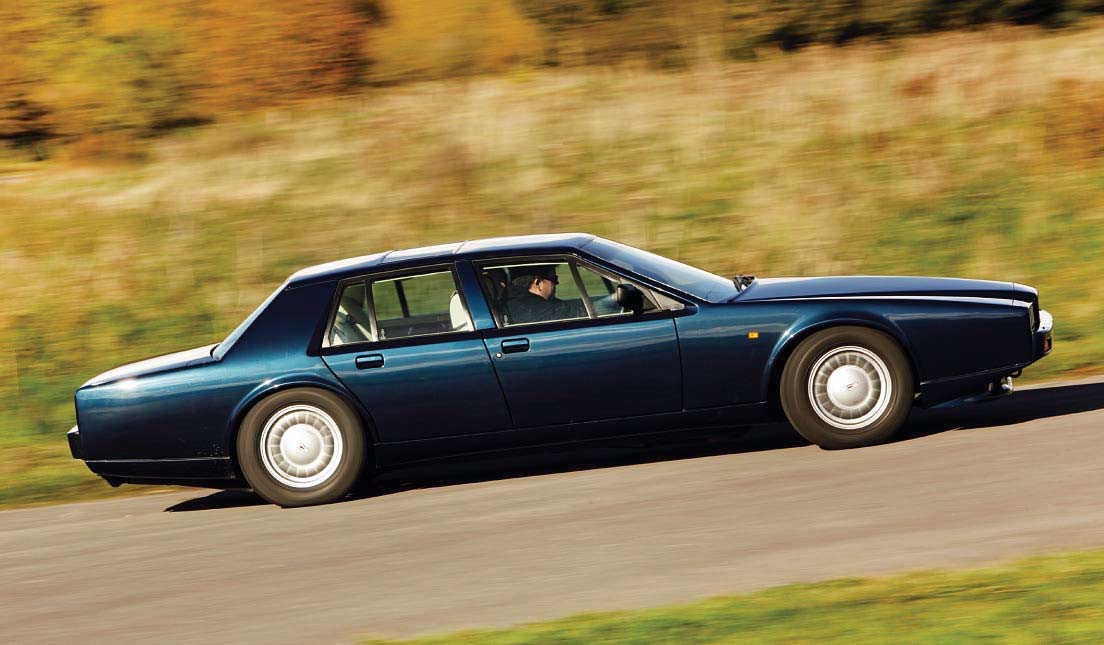

TECHNICAL DATA FILE SPECIFICATIONS BRISTOL 412
Sold/number built 1975-’1982/61
Construction steel chassis; steel/alloy body
Engine all-iron, ohv 5899cc V8, single four- choke carb; power and torque not disclosed
Transmission three-speed auto, RWD
Suspension: front independent, double wishbones, coil springs, adjustable dampers, anti-roll bar rear live axle, torsion bars with self-levelling, adjustable dampers. Watt linkage
Steering power-assisted recirculating ball
Brakes discs, with servo
Length 16ft 2 ½ in (4940mm)
Width 5ft 9 ½ in (1765mm)
Height 4ft 9in (1443mm)
Wheelbase 9ft 6in (2896mm)
Weight 4229 lb (1922kg)
0-60mph 7.4 secs
Top speed 140mph
Mpg 13
Price new £14,584 (‘1975 UK)
Price now £20k (2018 UK)
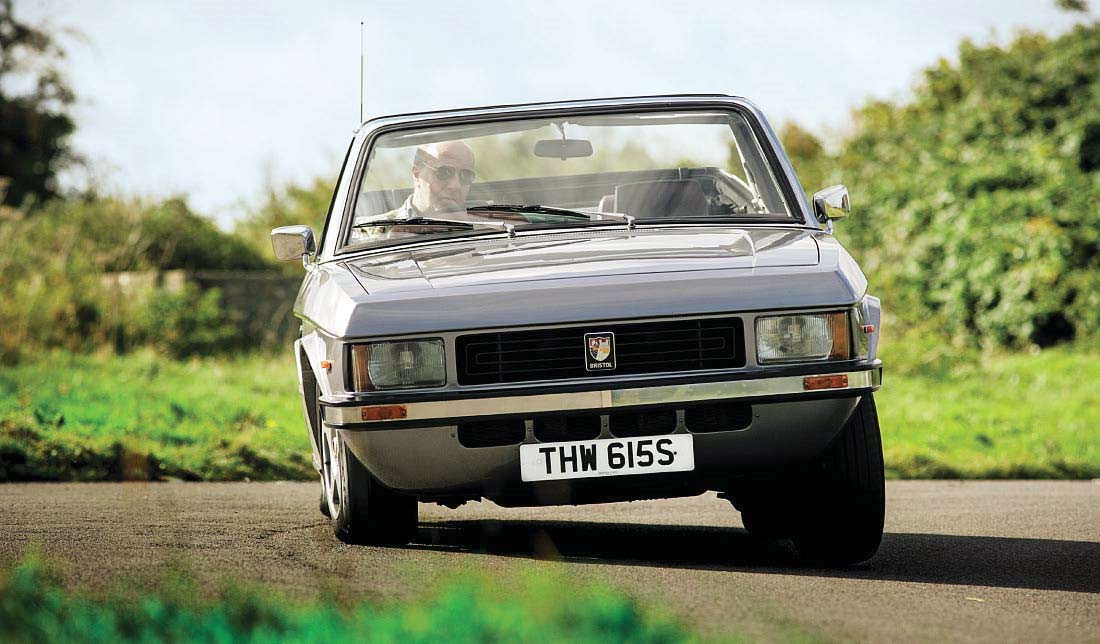
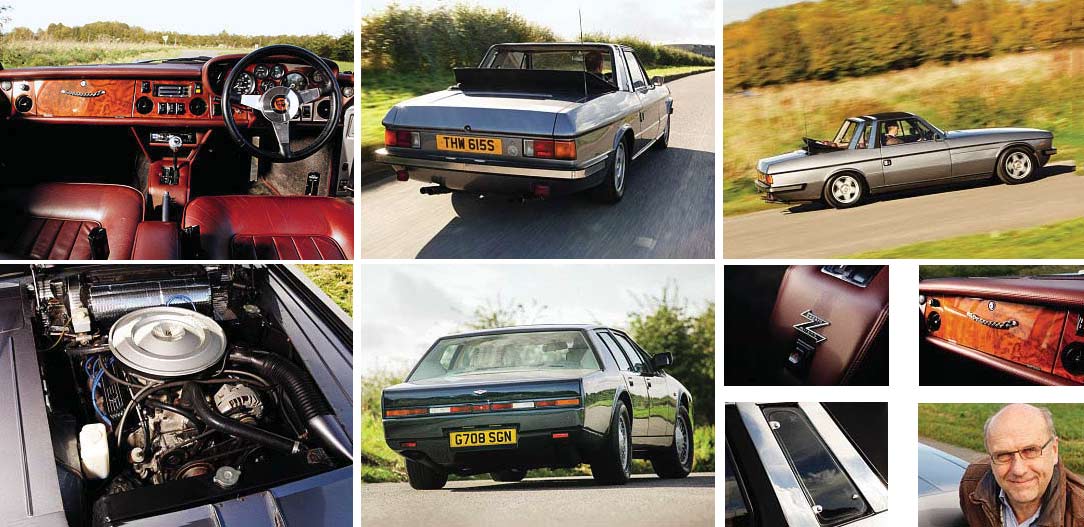
TECHNICAL DATA FILE SPECIFICATIONS ROLLS-ROYCE CAMARGUE
Sold/number built 1975-’1986/529
Construction steel monocoque, aluminium bonnet, doors and bootlid
Engine all-alloy, ohv 6750ccV8, four-choke Solex carb; power and torque not disclosed
Transmission three-speed auto, RWD
Suspension independent, affront by wishbones rear semi-trailing arms, coil springs, self-levelling telescopic dampers, anti-roll bar f/r
Steering power-assisted worm and roller (rack and pinion from 1977)
Brakes powered discs
Length 16ft 11 ½ in (5160mm)
Width 6ft 3 ½ in (1900mm)
Height 4ft 9in (1400mm)
Wheelbase 10ft (3050mm)
Weight 5175lb (2347kg)
0-60mph 11.5 secs
Top speed 120mph
Mpg 12
Price new £29,250 (’1975 UK)
Price now £40k (2018 UK)
